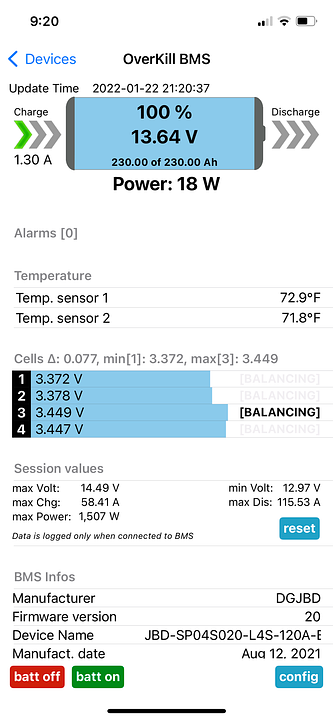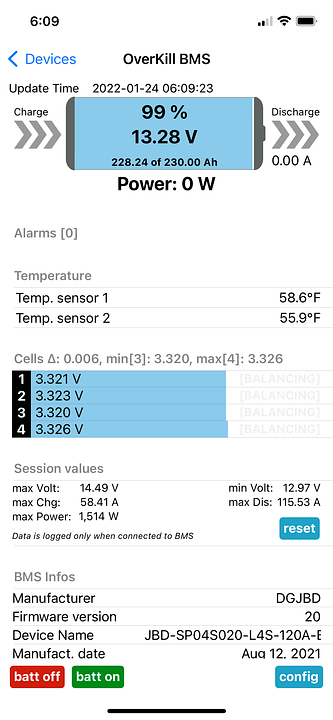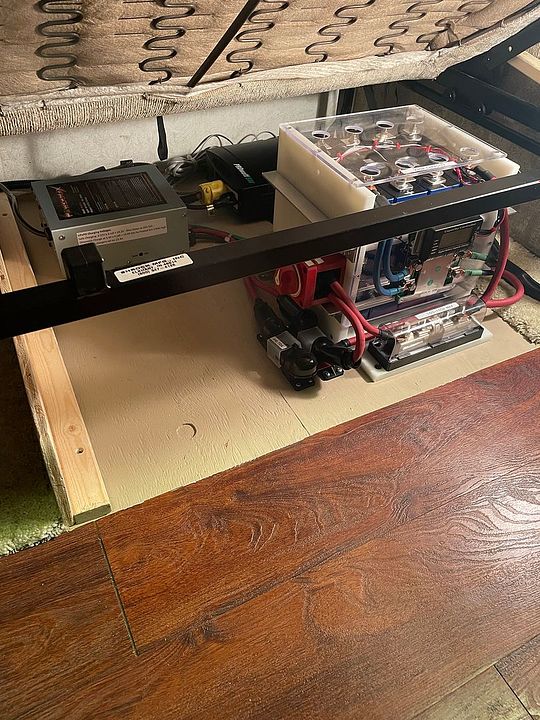For setting EPEver SCC parameters I found this thread from last year:
This little chart has all of the charge settings in the software - default for lifepo4 on the left, and what the thread starter set theirs at:
Based on this I set mine as follows:
Charging limit: 14.4
Equalize: 14.1 - zero minutes
Boost: 14.1
Float: 13.4
Boost reconnect: 13.25
Boost duration: 15 min
I set both controllers to the same parameters, set the portables out in the sun. Interesting - they are poly panels, 160W total, were outputting 8A in boost mode. The 430W roof panels are flat, they were putting out 12A, boost mode. Obviously orientation to the sun is critical for best performance.
Both appear to work exactly as expected. Both charged at full current for a couple of hours until the pack reached about 13.5V, then the smaller controller dropped to float. The larger one stayed in boost for quite awhile longer. I tried changing the boost duration but that didn't change anything. The pack had to reach a certain level, and then the controller dropped to float. This happened at right about 92-93% of full SOC. At float both controller reduced current by about half, and continued to peak the pack up to 100% SOC.
As mentioned previously, if charge voltage is set higher than 3.5V per cell, when all of the cells reach that level there are two of the four that will start to accelerate past the other two. Setting the float over 13.4 results in the cells becoming out of balance at charge termination. This tells me the top balance isn't perfect, one cell is reaching full charge before the others.
Charging the pack to 99% keeps them all in balance - going over results in imbalance. If I leave the charge voltage high, such as with the powermax, one cell goes over voltage and bms shuts off charging. If I set CV at 13.4V current stops and the cells remain balanced.
Here's charge state at the end of solar charging yesterday, current finally reached zero. I have a slight cell imbalance at this level:

And this morning after resting:

Doing some more research I found I can either live with 99% charge level with lower charge voltage settings, or disassemble and do another top balance. Or do a few cycles and see if they come in to better balance at the top with BMS balancing.






